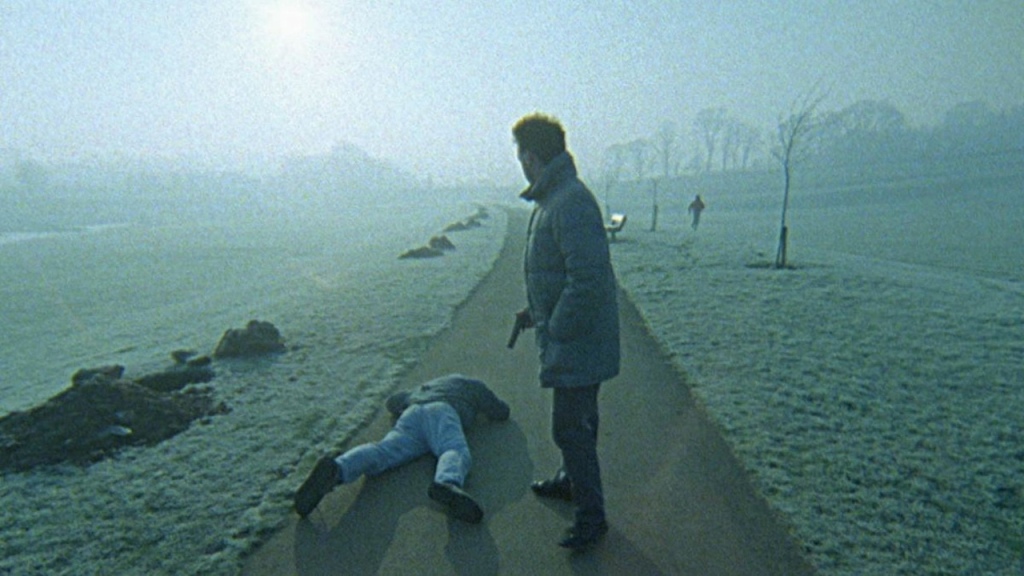Elephant (Alan Clarke, 1989) is a 39-minute short film set in Northern Ireland, depicting 18 brutal murders during The Troubles. Partly based on authentic police reports, the film contains little to no dialogue and we learn nothing about each of the eighteen gunmen or victims. Each murder is carried out calmly and casually, and the motive behind each is never disclosed – we can only surmise that the murders are religiously motivated, reflecting the violent conflict occurring in Northern Ireland during this period.

Through a variety of techniques, the film creates an eerily chilling atmosphere. It is shot with 16mm film, with the majority of the film being shot with a Steadicam. This, alongside an abundance of Kubrick-esque tracking shots, make the film feel almost like an observational documentary of sorts. Each of the eighteen killings are displayed in a neutral and ‘formulaic’ manner, to the point where the viewer almost feels desensitised to the horrific events being portrayed.
An essential technique employed by Clarke throughout the film is a prolonged static mid-closeup of the lifeless corpse after each murder is committed. This effectively instills a sense of acute trepidation in the viewer, forcing them to possess empathy towards the innocent victim. The film does not conform to any particular genre conventions, and merely attempts to reflect the events of The Troubles.
Although I didn’t particularly receive much enjoyment from Elephant, I appreciated the bleak social commentary of The Troubles that it had to offer. The film also demonstrated to me the effectiveness of prolonged static shots in the way of creating dramatic effect.